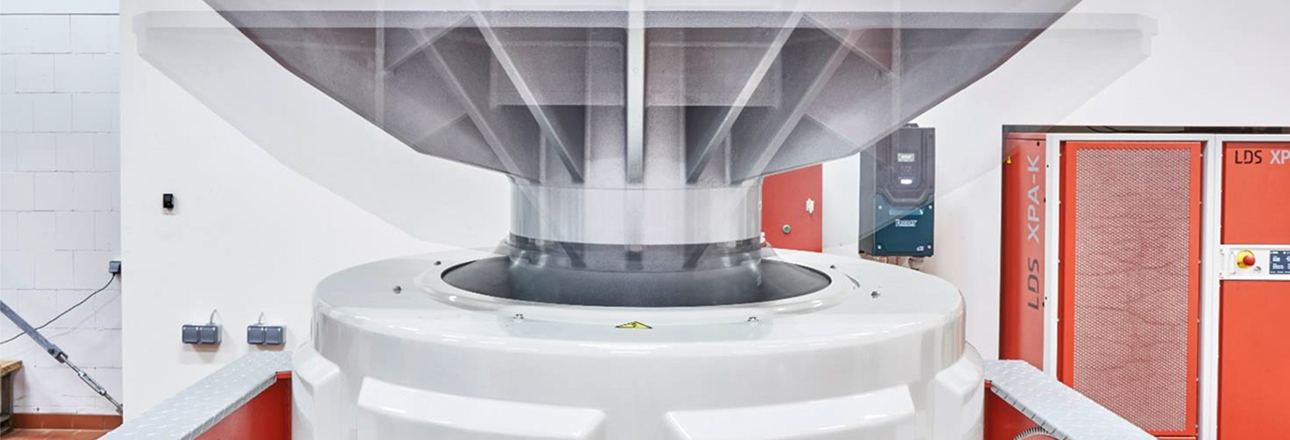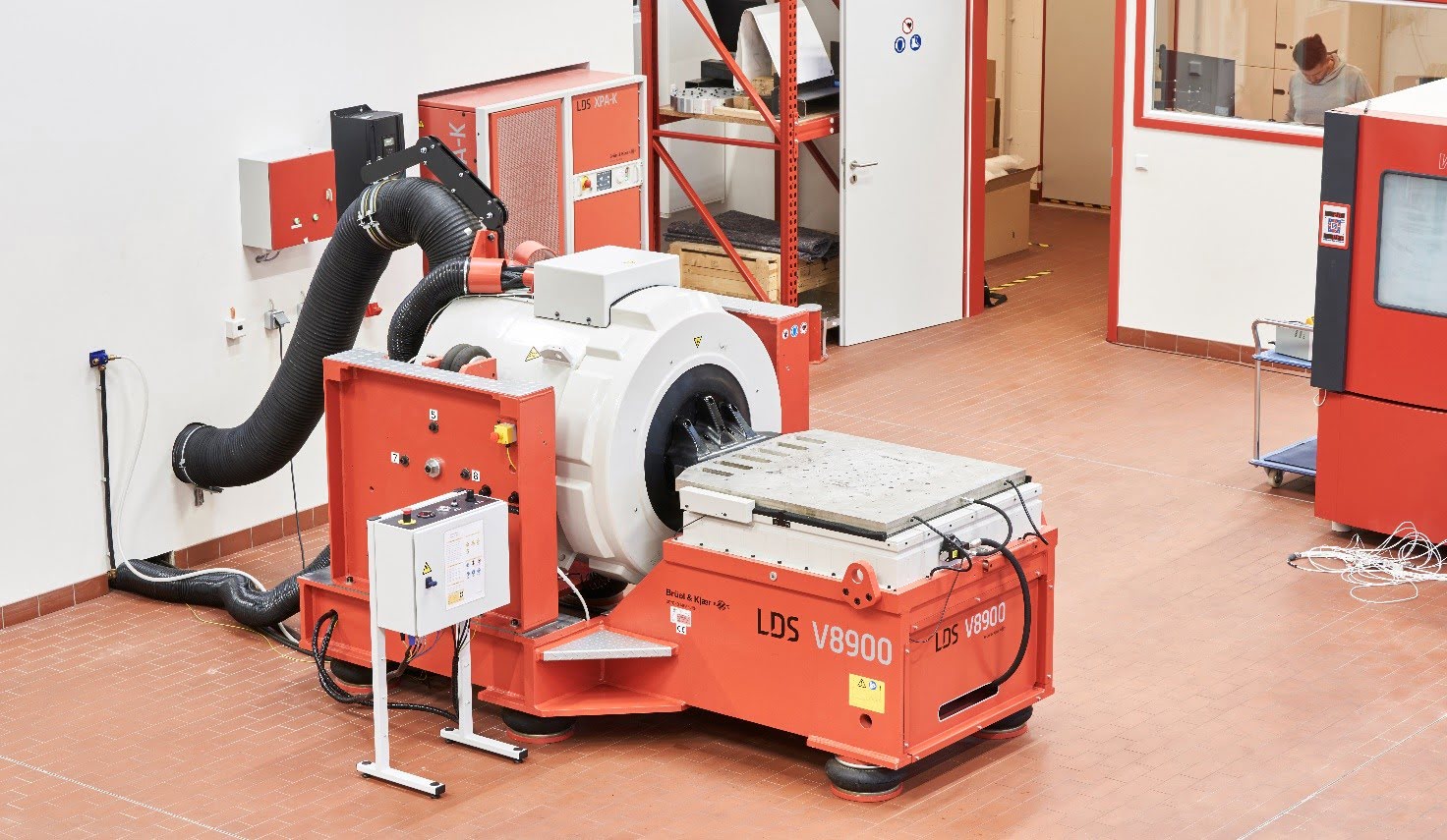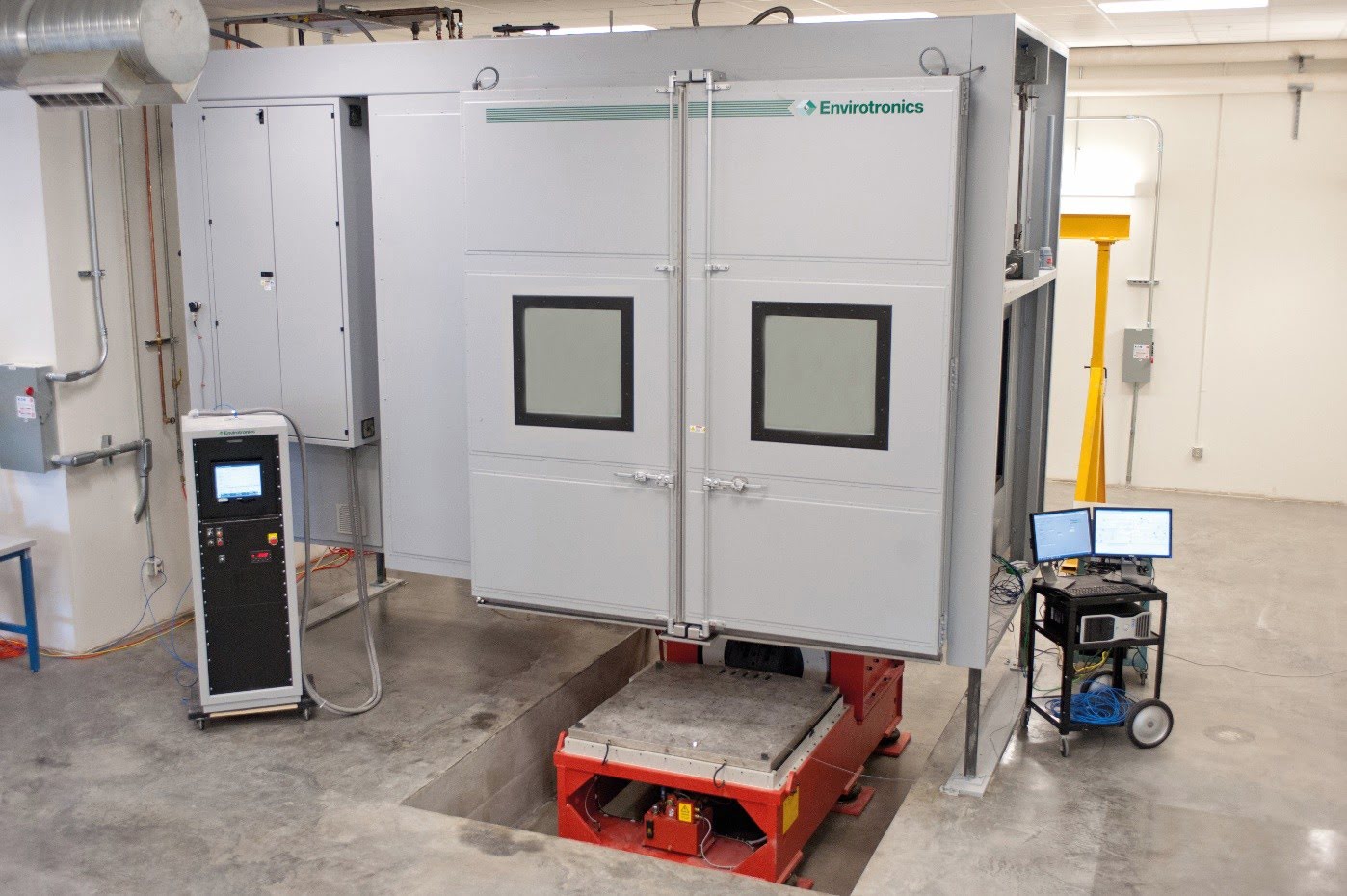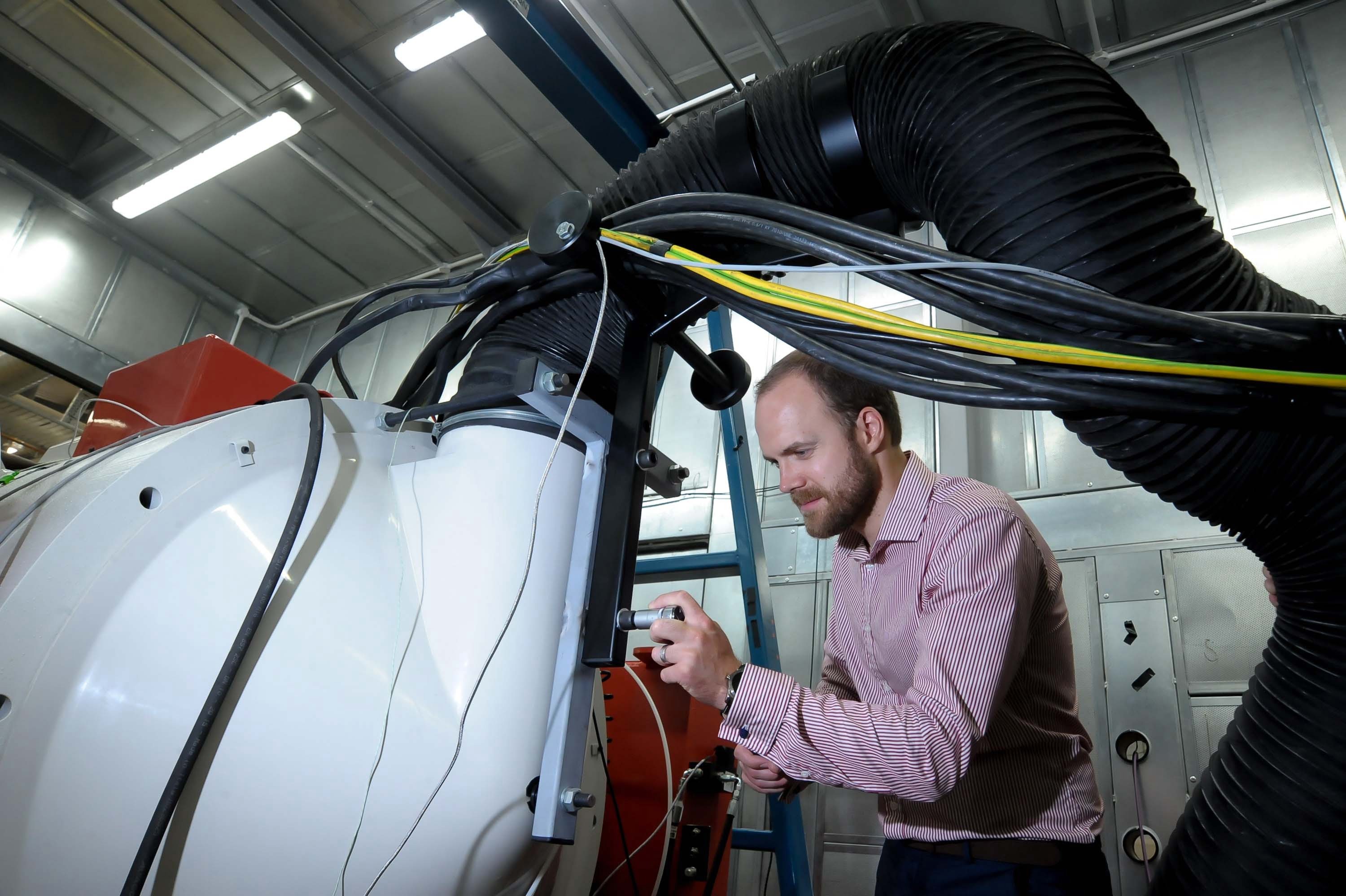The article is based on the many years of experience had by Brüel & Kjær VTS in the world of vibration, and the plethora of problems that can be encountered during the vibration testing of components and assemblies. This time we look at site design including:
- Layout
- Environmental
- Service and cabling
- Electromagnetic
Layout of control room
Position of control room
The control room should, if possible, be positioned within sight of the vibration system. If this is not possible then a CCTV system should be installed to provide a view of the vibrator.
Room access
There should be adequate access both for installation and maintenance of the vibration system, and to allow the easy and safe mounting of payloads and fixtures.
Vibration
Consideration should be given to the vibration, especially at low frequencies, that will be transmitted into the floor during testing. Various mounting options are available to reduce transient vibration, but all have a low-frequency limit. An unsuitable isolation mounting resonance can lead to excessive motion of the vibrator and even damage to the surrounding building.
Location of amplifier
The system amplifier should not be sited directly against a wall as this will restrict the air flow available to cool it; maintenance will also be easier if the amplifier is surrounded by free space. System user manuals contain detailed recommendations on this.
Airglide mounts
When equipment is fitted with ‘Airglide’ mounts, it is necessary to ensure that the floor has a suitable finish and level as specified in the user manual.
Fan hoses
Extended fan hoses should not be fitted without consulting the engineering team at Brüel & Kjær VTS; any hose extensions could result in the vibrator overheating. For the same reason, sharp bends in hoses should be avoided, and hose arrangements shown in outline drawings should not be modified without consulting Brüel & Kjær VTS.
Floor loading
The floor must be able to bear the load of the vibration system – vibrators and their associated equipment are heavy items.
Position of main isolators
Main electrical isolators and switches should be fitted in an accessible position close to the amplifier. Positioning should comply with relevant safety regulations.
Acoustic noise
Be aware that due to the nature of vibration systems, audible noise is produced by the armature. For larger systems this can often lead to high levels of noise. Careful consideration should be given to the use of sound attenuating structures and soundproof rooms, etc. Vibrator noise levels are specified in the user manuals.
Other equipment
Siting vibration systems next to other heavy equipment can cause problems due to the transmission of vibration or electrical noise.
Environmental vibration testing
Temperature and humidity
It is advised not to operate Brüel & Kjær VTS equipment outside of the temperature and humidity limits; these are specified in the relevant user manuals.
High altitudes
At higher altitudes, the cooling of the vibrator will be affected by the reduced air density. If this is likely to be a problem, it is recommended to consult the engineering team at Brüel & Kjær VTS for further advice.
Cleanliness
The vibration test system and other associated equipment should not be operated in damp, oily, dirty or dusty environments. Dirt and dust may cause the centre positioning system (where fitted) not to function correctly. Water collection due to damp conditions will cause corrosion of the vibrator and may also lead to electrical short circuits. Oil on or around the vibrator makes the surfaces slippery, creating a hazard for operators, ensuring the surrounding areas are clean and tidy are an essential part of the day-to-day maintenance activities.
Condensation
If the operational temperature and humidity (for instance when operating with a thermal chamber) are such that the temperature of the vibrator armature falls below the dew point, moisture will condense on the armature. This can cause corrosion to the frame and lead to electrical shorts. These problems can be avoided by:
- The use of a thermal barrier
- Fitting heating elements around the armature/chamber interface
- Directing the warm air expelled by the fan towards the underside of the chamber
Vacuum
When the vibrator is used with an altitude chamber, the chamber will apply suction to the armature. In solutions where an air-cooled vibrator is used, it’s worth noting that the load compensation is based on positive pressure, so special control will be required. In water-cooled vibration test systems, a small vacuum pump is fitted to provide negative pressure on the armature. This, however, works against the vacuum pump for the chamber, which is usually larger.
Thermal expansion
When using a thermal chamber, it is necessary to be aware of thermal expansion and the resulting stresses it can cause; this is particularly important when the chamber is attached to a multi-bearing slip table.
Corrosion of magnesium components
The magnesium alloy used in slip tables, head expanders and other components is susceptible to corrosion, as such the advice on the care and maintenance of a vibration test system in the user manuals should be followed carefully.
Service and cabling of vibration testing equipment
Availability of services
It is recommended to ensure that all services required for the equipment are available and as specified in the relevant user manuals.
Cabling
The following points should be borne in mind when running cabling:
- All cable lengths should be kept to a minimum, as cables longer than those specified in the user manuals may restrict the performance of a system. If in doubt, consult the engineering team at Brüel & Kjær VTS
- Care should be taken not to apply undue loads and tension to cable terminations
- Ducting for the armature drive and field cables should be ventilated to avoid the possibility of heat build-up, which could restrict performance and cause damage
- Cables should be routed neatly and safely to avoid possible trip hazards
- Power and signal cables should be routed separately to avoid interference problems
- All signal cables should be screened; triaxial cables should be used for analogue signals over long lengths
Further guidance on cabling is given in the relevant user manuals.
Electromagnetic site design
Safety and RFI earths
It is recommended that safety earths are fitted and used where possible. RFI earths should be used and be of the correct type as specified. Further guidance on earthing is given in the relevant user manuals.
Mounting the vibrator
The body of the vibrator is constructed from steel to allow for conduction of the magnetic fields. If the body is connected to large steel components other than supplied by Brüel & Kjær VTS, these fields will flow in the connecting parts. This can cause problems with magnetised plates, loss of flux within the vibrator and/or large stray magnetic fields.
Siting of control equipment
If control equipment is sited close to the vibrator, the stray magnetic field may distort the monitor.
Low frequency field
Brüel & Kjær VTS recommends that personnel, particularly those with medical implants, do not enter the danger zone whilst the vibration test system is running.
Further guidance on safe practices and hazards is given in the relevant user manuals.
Related articles
- Vibration Testing – Dos and Don’ts: Vibration Shakers
- Vibration Testing – Dos and Don’ts: Shaker Operation
Related Information




